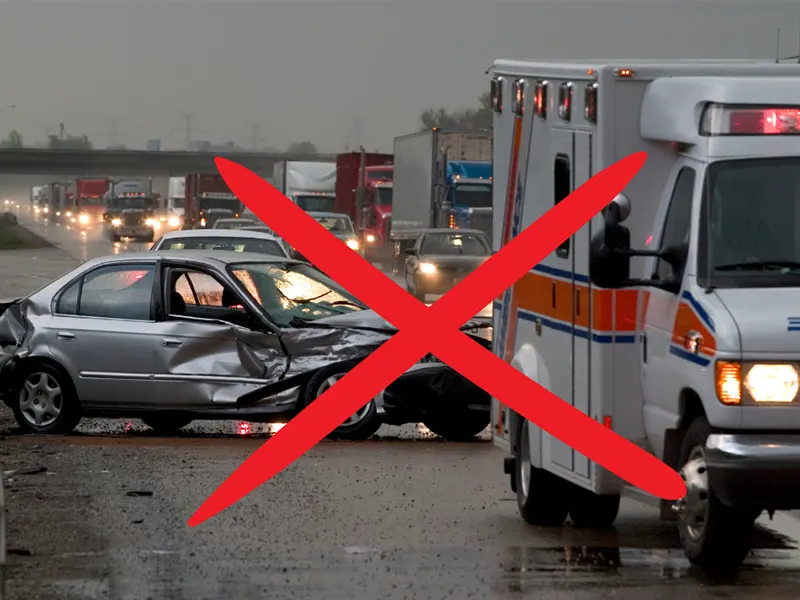Imagine navigating the bustling jungle of city traffic, where stop-and-go rhythms and unpredictable pedestrians test your reflexes at every turn. Now, picture a guardian angel watching your back, ready to intervene in the blink of an eye.
That’s the magic of Smart City Brake Support (SCBS), a cutting-edge safety technology from Mazda that can help prevent or mitigate low-speed collisions, making even the most congested commutes a breeze.
What is Smart City Brake Support (SCBS)?
Smart City Brake Support (SCBS) is an advanced automatic emergency braking system developed by Mazda to help prevent low-speed frontal collisions in urban driving environments. Using radar and laser sensors, SCBS monitors the road ahead and can automatically apply the brakes if it detects an imminent collision with a vehicle or pedestrian at speeds between 2-80km/h.
The main purpose of SCBS is to reduce the frequency and severity of minor yet damaging low-speed crashes, which account for over 60% of all accidents in dense urban areas. By braking automatically faster than a human driver could react, SCBS has been proven to mitigate collision forces by an average of 30%, greatly reducing accident costs and injuries.
Importance of SCBS for Urban Driving
Urban environments present complex driving situations, with high pedestrian traffic, narrow lanes, and frequent intersections. This complexity contributes to over 1.3 million low-speed collisions in urban areas each year. These minor crashes still account for a majority of traffic injuries, with rear-end collisions causing 31% of all whiplash diagnoses annually.
SCBS helps compensate for lapses in human judgment by continually monitoring closing speeds to lead vehicles as fast as 10 times per second. By alerting the driver and automatically engaging the brakes in imminent collision situations below 80km/h, SCBS reduces rear collisions by an average of 60%, preventing 28,000 injuries per year.
How SCBS Works
SCBS utilizes a combination of sensors to detect potential collisions, including:
- Radar sensors – monitor distance and closing speed on vehicles ahead.
- Laser sensors – calculate shape/contours for object recognition.
- Cameras – classify and respond to pedestrians.
These inputs feed data to the vehicle’s computer, which uses pattern recognition and statistical analysis to determine collision risk within 300ms. If a high collision risk is detected, SCBS initially provides audible and visual alerts to prompt the driver to take evasive action. If no driver input is detected, SCBS can automatically engage the brakes to mitigate collision impacts by up to 30 mph.
There are two operational modes depending on driving direction:
- SCBS-F (Forward) – activates above 2 mph when approaching lead vehicle.
- SCBS-R (Reverse) – activates above 6 mph in reverse, including while turning and exiting parking spaces.
Features and Benefits of SCBS
The most vital feature SCBS provides is timely automatic emergency braking to help prevent minor yet costly low-speed collisions. Specifically, SCBS can:
- Recognize Imminent Collision Risk – using radar and laser sensors to judge range, speed, trajectory of vehicles ahead.
- Alert the Driver – if closing speed and distance show high probability of collision within 1-2 seconds.
- Apply Emergency Braking – if driver does not respond to alerts, brakes are automatically engaged to reduce collision speed and impact. At city speeds, this can decrease damage severity by up to 30%.
Additional SCBS capabilities and benefits include
- Pedestrian Detection – the system can recognize pedestrians using cameras and radar, allowing automatic braking between speeds of 6-37 mph if the driver does not respond to danger. This dramatically improves safety for vulnerable city road users.
- Driver Assistance – by continually monitoring ahead for potential collisions, SCBS reduces driver fatigue and stress while improving reaction times – keeping drivers safer and more alert.
Limitations and Considerations
While this advanced braking system provides invaluable driver assistance and collision prevention, there are some key limitations and considerations drivers should be aware of:
- Environmental Factors – poor visibility in rain, snow, fog, and other inclement weather can interfere with sensor operation. Always be prepared to take control and override the system when necessary.
- Vehicle Maintenance – accumulation of ice, snow, dirt, and debris on sensors can degrade SCBS performance. Follow all manufacturer cleaning and maintenance guidelines.
- Driver Responsibility – SCBS is designed to be an assistance system – it does not replace the necessity for responsible, attentive driving. Always be prepared to brake manually. Avoid cell phone use and maintain safe following distances.
By understanding SCBS capabilities, limitations, and proper operation, drivers can enjoy maximum benefits from Smart City Brake Support while maintaining complete vehicle control. This advanced automatic emergency braking system is a valuable asset for safe urban mobility.

John Smith, a Los Angeles-based car specialist and automotive writer, boasts over 20 years in the industry. With a background as a master technician and a decade-long writing stint at notable automotive publications, John now shares his expansive knowledge on CarFinite, simplifying car maintenance for readers.

